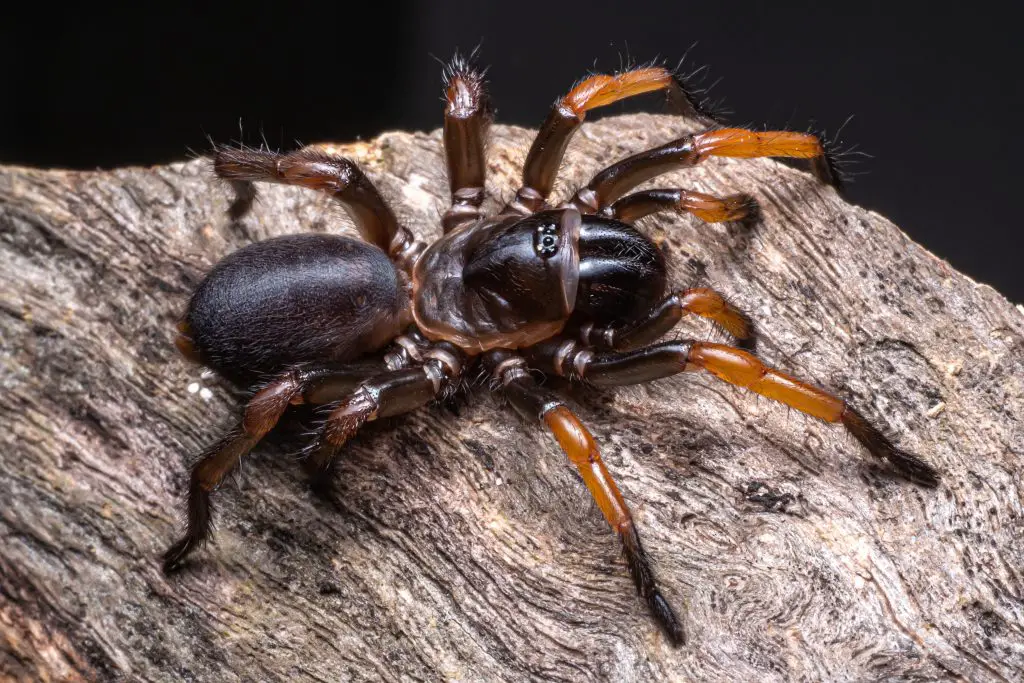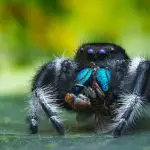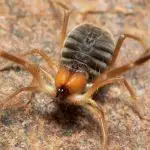Last updated on February 1st, 2023 at 09:59 am
Where do trapdoor spiders live? Though found around the world, these spiders are hard to find. Let’s look at the habitat and lifestyle they prefer…
Trapdoor spiders live in silk-lined burrows throughout the tropics, and into some temperate zones such as the Mediterranean, southern North American and South Africa.
Their burrows are around 3/4″ wide and 8″ deep. These burrows are specifically designed to help trapdoor spiders catch prey. Whenever a prey is nearby, a trapdoor spider would drag it inside the burrow and eat it.
Female trapdoor spiders don’t leave their burrows for a long time. After the mating season, female trapdoor spiders lay eggs in their burrows. Once the newborn trapdoor spiders become mature, they leave their mother’s burrows and dig their own.
During the mating season, the male trapdoor spiders leave their burrows in search of females. The female trapdoor spiders then lay hundreds of eggs in their burrows, and continue to take care of the newborn spiders.
Where do Trapdoor spiders live in North America?
These spiders live in a variety of habitats, from forests to deserts. However, they will often choose areas with a lot of vegetation for camouflage and shelter.
Although it’s possible to see them in urban areas, they are predominantly found in woodland settings. It’s fairly uncommon to see trapdoor spiders living in areas with a lot of human traffic.
Trapdoor spiders are named so because of the design of their burrows. These spiders first dig a hole in the ground and then strengthen it with a combination of saliva and soil. In the final stage, these spiders add a layer of silk to their burrows. These burrows form ‘trapdoors’ with the spider’s webbing and the soil around the burrow.
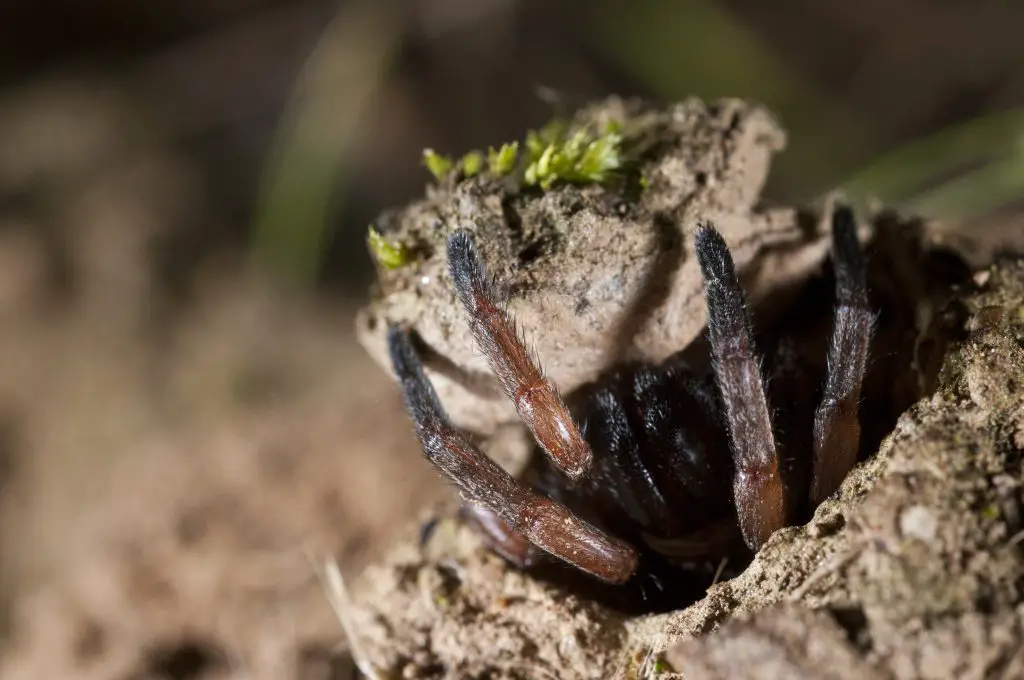
What do trapdoor spiders look like?
Trapdoor spiders are the size of a quarter, have a body about the same width, and have six legs and two eyes. They have a flat head with a small fang-like mouth on one side and a large eye on the other.
The trapdoor spider hunts insects by waiting for its prey to get close enough to grab it with its fangs. When an insect gets close enough, it bites down on the insect and injects venom through its fangs.
The venom paralyzes the insect and makes it unable to move while the venom slowly digests it.
The trapdoor spider’s camouflage allows it to blend into any environment—making it difficult for animals to spot them. It’s a built-in defense mechanism of trapdoor spiders that we also see in several other insects.
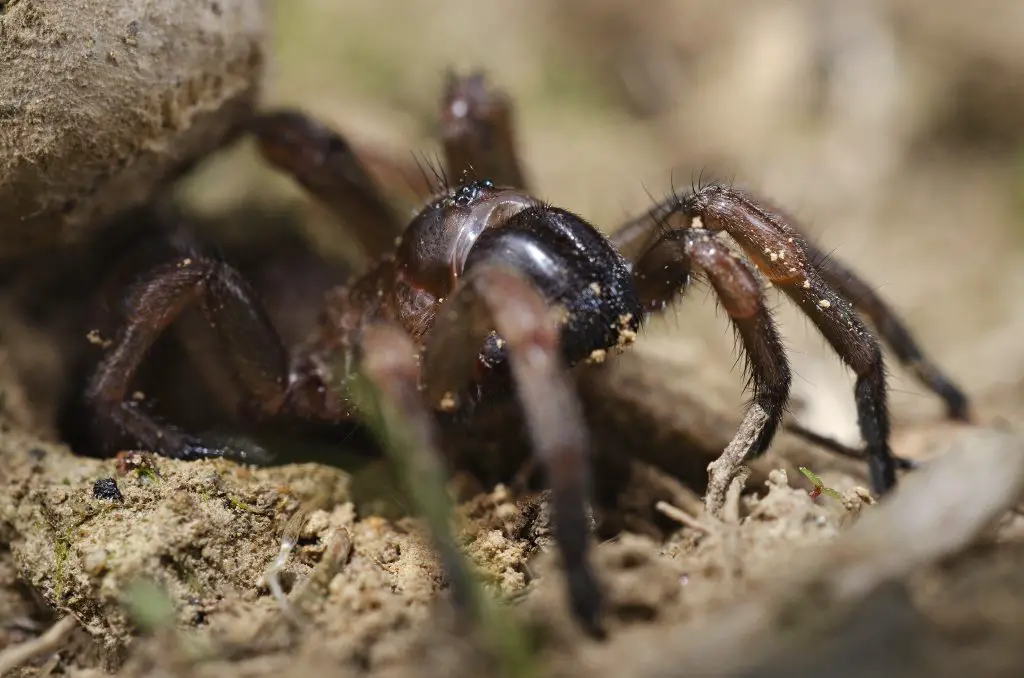
Are trapdoor spiders endangered?
A variety of Trapdoor spider species are endangered. Of course, they’re not the only ones—many arachnids are endangered.
But trapdoor spiders are especially at risk because they’re susceptible to prey animals. If you pick up a trapdoor spider to see what it is, you’re taking away its habitat, exposing it to predators that would otherwise never see it.
The best way to help protect these little creatures is by not picking them up and never digging up their burrows. If you find one of these spiders, try leaving it where it was (and maybe even note where you found it).
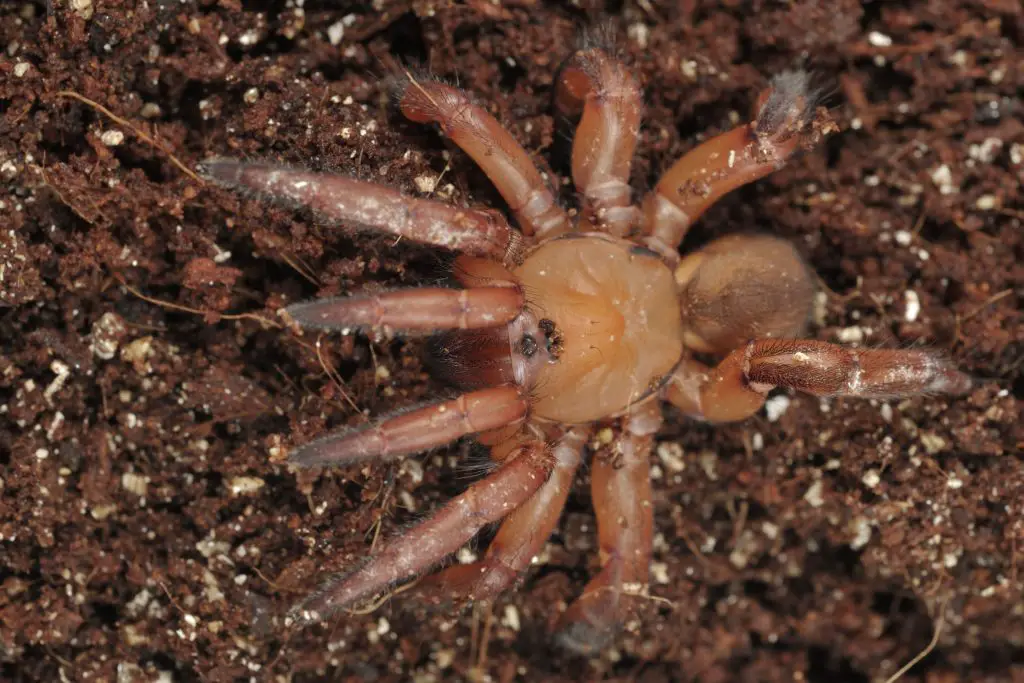
How do trapdoor spiders make their home?
Trapdoor spiders dig burrows and live in them. These burrows are up to 30 cm deep and 8 cm wide. Trapdoor spiders do much of their hunting from within the burrow by dragging their prey inside the hole.
In general, they use teeth-like structures on their chelicerae (fangs) to scoop out balls of dirt and dig their burrows. Often, they have to wait until a humid time of year when the soil isn’t too hard.
Their burrows also have doors made of webbing and earth. Moreover, trapdoor spiders line their burrows with saliva, soil, and silk.
How do trapdoor spiders catch their prey?
The trapdoor spider has an interesting method of catching prey. They detect movement and vibrations from within their burrows. Once sure about the prey, a trapdoor spider would leap out of its burrow and drag the prey inside the burrow.
They have long fangs, which help them catch their prey more easily. Trapdoor spiders spend most of their time inside burrows looking for prey, except in the mating season.
Trapdoor spiders have another unique trick: Venomous fangs on both sides of their mouth. They use those fangs to bite prey, which triggers the release of venom from special glands in their jaws.
The venom paralyzes their prey, but not fast enough for them to escape from it- this allows them to carry their paralyzed prey down to the burrow and eat it there. In general Trapdoor spider prey is mainly insects and other small arthropods.
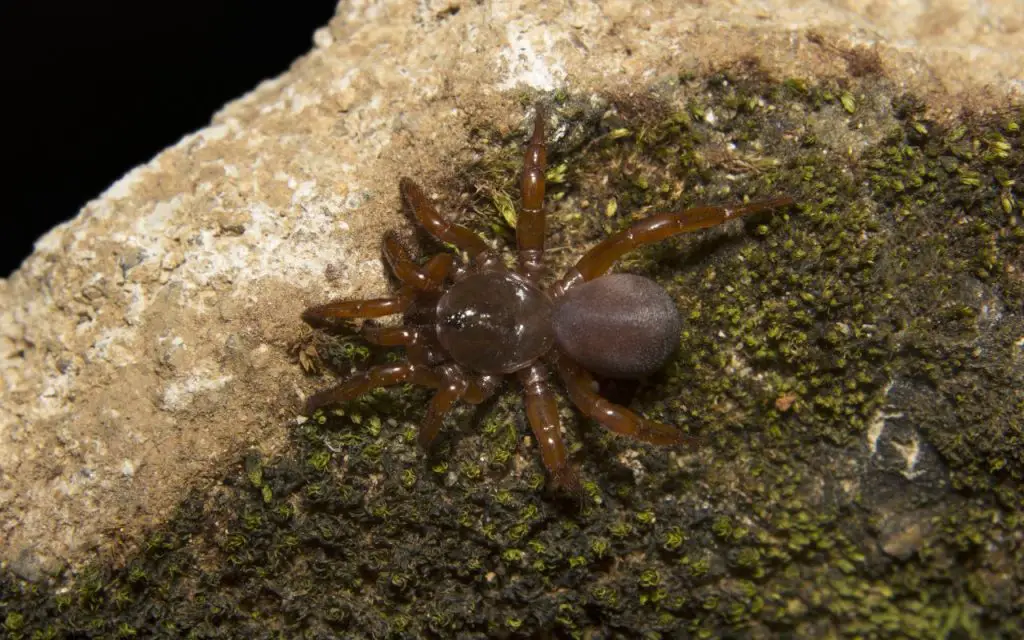
How giant are trapdoor spiders?
A trapdoor spider is a giant, hairy spider that lives in a hole in the ground. It has a long body and legs and can be as big as your hand. However, trapdoor spiders are 4 centimeters long on average.
Trapdoor spiders have an exciting way of getting around: they can walk upside down on their legs. They also have small eyes set at the top of their head. The eyes help them see better when they’re upside down.
Smaller trapdoor spiders are around 2.5 cm to 3 cm long. Some trapdoor spiders can grow to be longer than 4 cm, especially if they get the chance to live till complete maturity.
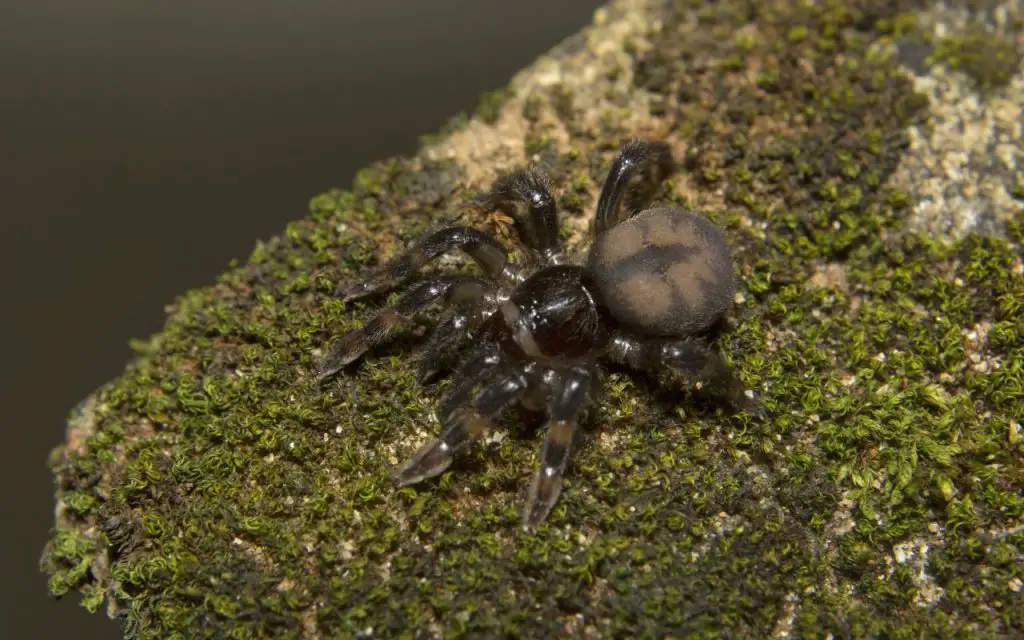
Is a trapdoor spider a tarantula?
A tarantula is a member of the Theraphosidae family of arachnids—the same family as your garden variety house spiders. Tarantulas are usually hairier and larger than trapdoor spiders. That said, the tarantula is one of the closest relatives of the trapdoor spider.
A tarantula is more than just an arachnid: they’re also known as “desert shrimp” because they live in desert habitats.
A trapdoor spider is also part of the Theraphosidae family but doesn’t primarily live in desert habitats. Instead, it lives in burrows and makes its home in the ground.
Trapdoor spiders are common in Florida, Texas, as well as other states in North America. They’re often mistaken for tarantulas because of their similar appearance and color, but that’s where the similarities end. To answer the question, no, trapdoor spiders are not tarantulas.
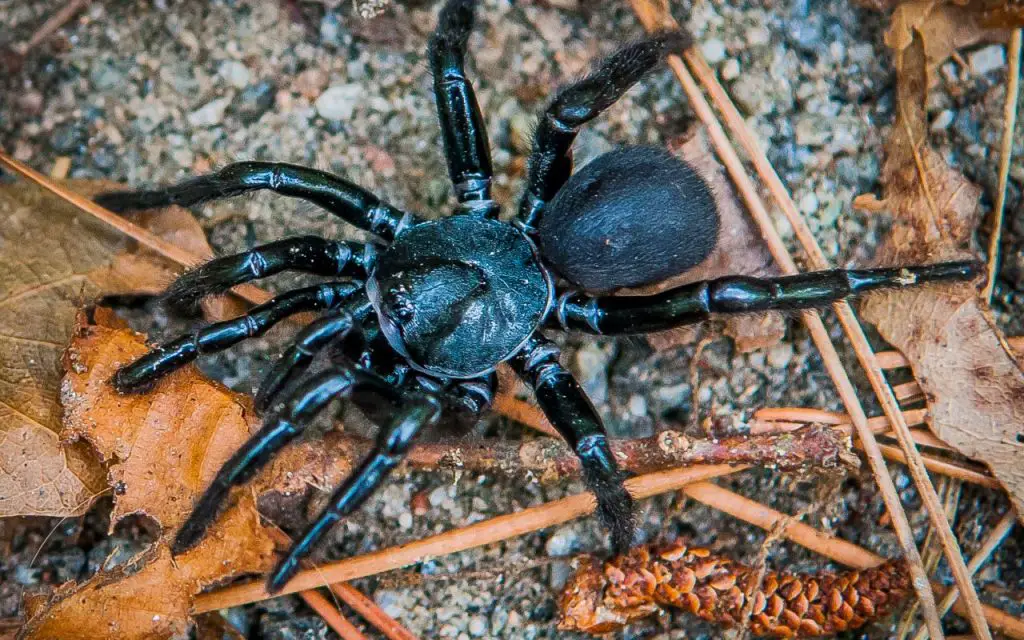
Are trapdoor spiders poisonous?
Yes, trapdoor spiders are poisonous. These aren’t the most poisonous creatures on the planet, though—that distinction belongs to the Gila monster, capable of causing heart attacks and death.
But if a trapdoor spider bites you, it will not kill you immediately. Instead, it’ll probably just give you a bad wound or infection.
If a trapdoor spider bit you, you would probably feel itchy for about 30 minutes. That is around how long it would require for you to develop a rash and experience some swelling near the bite.
While it’s advisable to not get stung by a trapdoor spider, it isn’t poisonous and will not pose health hazards.
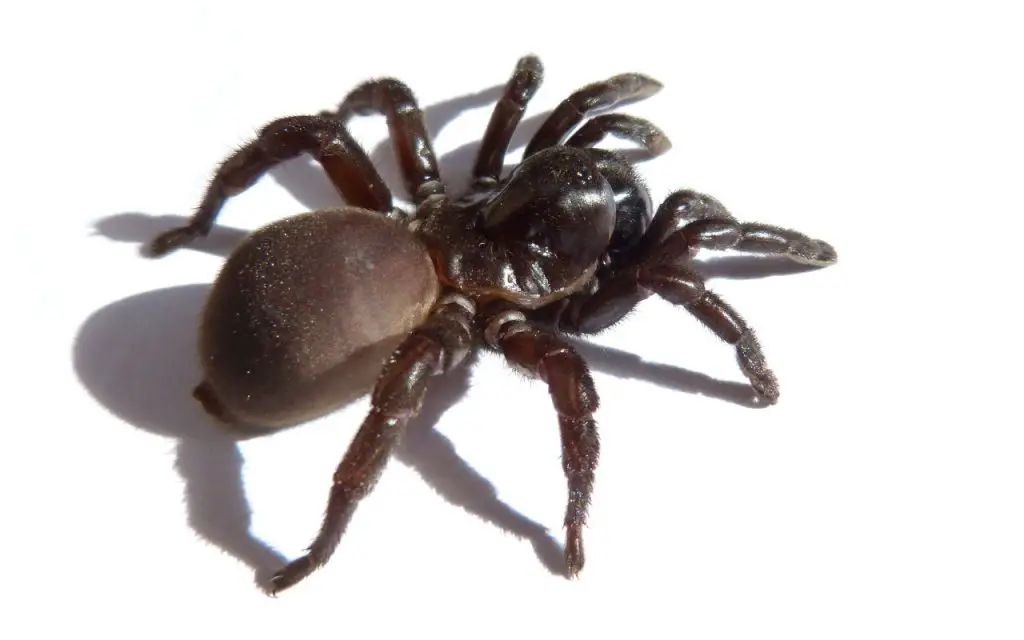
What happens if a trapdoor spider bites you?
If a trapdoor spider bites you, you’d be in temporary pain and discomfort.
- First, the venom is highly potent and will burn the bite site like fire. The pain can be excruciating—even worse than a bee sting or wasp bite.
- Second, the venom causes intense swelling and inflammation. If you get bitten multiple times, you’ll likely develop an infection.
- Third, the venom can stay in your system for up to two weeks after the bite—remember to sift through your wounds once they have healed.
*Note: most trapdoor spiders are harmless, but some tropical species have more potent venom, whilst others we just don’t know. Never take risks with poorly-known species.
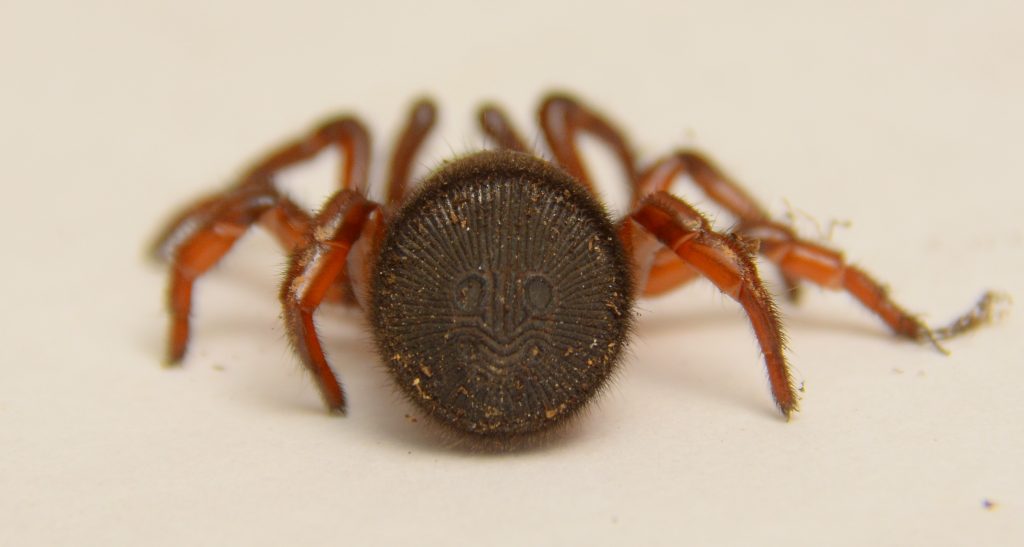
FAQ relating to where trapdoor spiders live
Trapdoor spiders are found in burrows in different parts of the world, almost always in forest areas. They can be found in humid forests, deserts, tundra, and tropical climates.
Let’s answer some of the most common questions about trapdoor spiders.
Where do most trapdoor spiders live?
Most trapdoor spiders live in the woods. They build long and intricate burrows where they stay, give birth, nurture young ones, and hunt.
It’s very unlikely for a trapdoor spider to make an urban setting its natural habitat. Nonetheless, it’s not impossible to spot a trapdoor spider in your home, especially if you live near a forest.
Male trapdoor spiders are more likely to lose their way and end up in human-populated places during the mating season. The females spend almost all their lives inside their burrows.
What states do trapdoor spiders live in?
There are trapdoor spiders in all 50 States, but some may be more common than others.
The most common trapdoor spider is the Black and Yellow Garden Spider. You can find this black spider with yellow markings throughout the United States.
However, even more varieties of this species have been discovered recently.
There are also other types of trapdoor spiders known as funnel-web spiders or fishing spiders. These can also be found throughout the United States but tend to live in Southern states such as Florida and Louisiana.
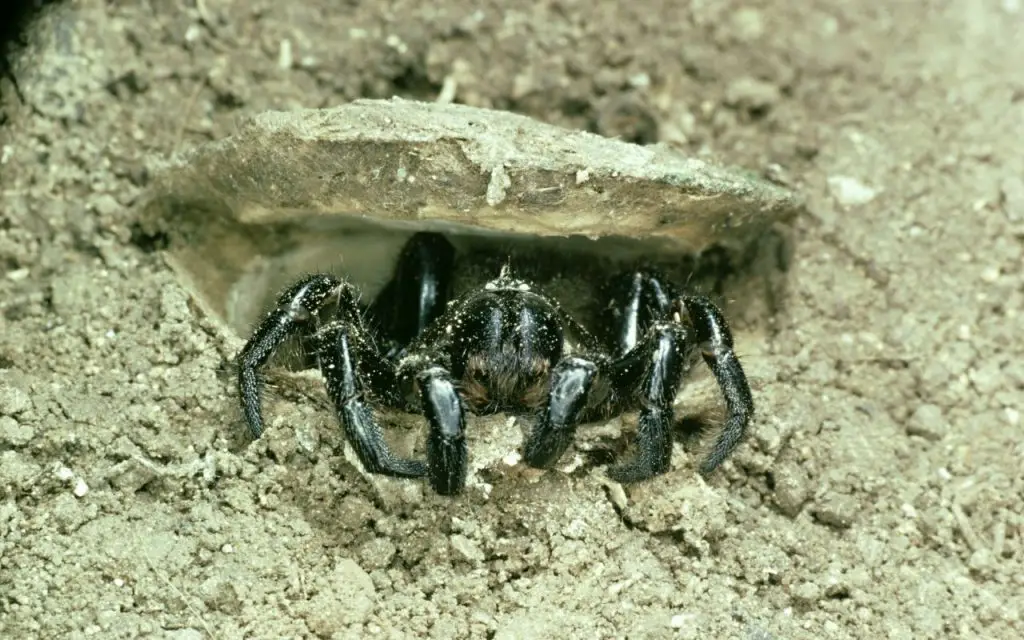
Do trapdoor spiders bite humans?
Yes, trapdoor spiders bite humans. They do it because they are aggressive and territorial, and retaliating to perceived threats is their natural response.
Trapdoor spiders are venomous and will bite humans if they feel threatened. The bite can be painful, but trapdoor spider venom is non-lethal for humans.
However, their venom can cause allergic reactions in some individuals, which could be severe.
Are trapdoor spiders in Australia?
Trapdoor spiders are a common sight in Australia and found in almost every region of the country. They can be found throughout Australia, although they are most prevalent in the Northern Territory, Western Australia, and sections of Queensland.
They’re generally harmless to humans—they don’t bite or sting without provocation. In odd cases, you may even spot a trapdoor spider inside a home. However, it’s pretty rare both in Australia and other parts of the world.

